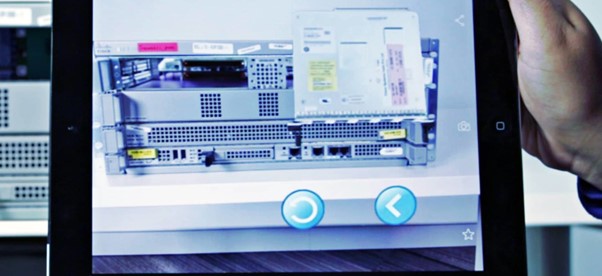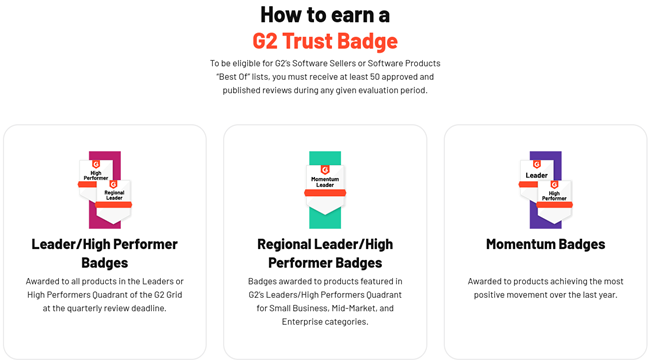by Anirudh Sharma for MarketingProfs
In today’s competitive marketing landscape, brands must continuously seek innovative ways to stand out and engage their customers.
Gamification is one such tactic; it enables marketers to enhance user engagement and loyalty. In fact, 93% of marketers say gamification and interactive content are effective for educating their buyers.
Gamification marketing refers to the use of game design and mechanics in marketing campaigns to offer interactive and memorable user experiences. Marketers use gamification to boost engagement, sales, and loyalty.
Keep reading to learn how to implement gamification in your marketing, and why you should.
Top 4 Types of Gamification in Marketing
1. Contests and Giveaways
Contests are one of the best ways to include gamification experiences in your marketing strategy. They help boost audience engagement and brand awareness without requiring you to promote yourself directly or be too salesy.
A contest requires users to participate in a competition and complete a specific task. That could be posting a video featuring a product, submitting a review, answering a question, etc. To encourage participation, selected winners of the contest win prizes.
Here are tips for running a successful contest:
- Determine the objective (increase in sales, website traffic, signups, etc.).
- Decide the participation criteria.
- Select the prize.
- Decide the winning criteria and the number of winners.
- Run the campaign and let the fun begin.
- Follow up with the participants and engage them further.
social media plays an instrumental role in successful contest marketing. It helps you reach a broad audience, boost awareness, and increase branded user-generated content (UGC).
2. Virtual Reality and Augmented Reality Experiences
The metaverse is reshaping the Internet, and so it has compelled marketers to rethink their marketing and customer engagement strategies. Its impact ripples outside the metaverse, too: VR and AR have emerged as popular marketing trends.
Virtual reality (VR) creates immersive visual environments capable of simulating vision (sight), audition (hearing), and somatosensation (touch). Ever tried out those VR 360-degree under-the-sea experiences? In VR marketing, you bring similar experiences to your users. VR marketing offers immersive and memorable user experiences, increasing awareness, recall, and engagement.
For example, VERYX, a food manufacturing systems company, used VR to demonstrate its digital food sorting platform to potential customers.

Source: https://www.leadpoint.ch/files/ar-in-b2b.pdf
Augmented reality (AR) incorporates or overlaps virtual items (text, 3D models, etc.) into real-world environments to create an enhanced, immersive experience. Remember when Pokemon Go took the gaming world by storm? That’s a classic example of AR in action.
Cisco, a technology company, used AR to demonstrate its products. Users could point their smartphone’s camera at a product to get detailed information and installation instructions. That made the process fluid, and it drastically improved the customer experience.

Source: https://www.blippar.com/work/cisco
Note: AR and VR are similar technologies and can even be used together (known as mixed reality, or MR) to make the experience even more engaging.
3. Progress Bars and Badges
You might have seen software listing websites such as G2, Capterra, and Software Advice assigning badges to certain software solutions. Those badges build more trust and help businesses stand out from the crowd.

Source: https://sell.g2.com/g2-trust-badges
Badges are a powerful tactic that creates a sense of achievement. And in B2B, getting badges can even help businesses get customers. For example, many marketing agencies earn the Google Premier Partner badge and use it to build credibility and acquire more clients.
You can also use progress bars alongside badges. Typically, a badge is given on completing the progress bar.
Let’s say you offer a project management solution. You can create a progress bar for creating 10 projects and then give an accomplishment badge on completion.
QRCodeChimp, a QR code-generator solution, uses progress bars to inform users about their account status and increase engagement.

Source: https://www.qrcodechimp.com/
4. Loyalty Programs
Loyalty programs are a robust engagement and retention tool through which you give members the incentive to buy from you. About 50% of consumers are part of up to three loyalty programs.
Though it’s a more common engagement strategy in B2C marketing, B2B brands have also gotten excellent results from loyalty programs. For example, the automotive company TRW Automotive started “Automotive Diamonds,” its multipartner loyalty program for independent aftermarket garages. Program members earn reward points for their purchases and redeem them for rewards.
How to Develop a Gamification Strategy
Having discussed the importance of gamification and some amazing techniques, let’s now talk about developing a gamification strategy.
Every business is unique and pursues its own objectives, but this blueprint is universal.
1. Identify your marketing objectives
Your objective could be higher website traffic, more signups, more sales, or higher retention.
Determine whether gamification can help you achieve those goals. Get the marketing manager and other decision-makers on board to figure out whether you should invest in gamification.
2. Define your target audience
The target audience can vary depending on the type of your business and the product/service you offer.
For instance, if your product is a customer relationship management (CRM) solution, your target audience will likely be small to midsize business (SMB) owners. On the other hand, if you sell headphones, you’ll probably target Gen Z and millennials looking for high-quality gear.
3. Choose a gamification technique
Choosing a gamification technique includes determining the game mechanics and elements. Again, this step will depend on your objective, product, and type of business.
If you sell an easily affordable physical product, a loyalty program can be highly effective. You can give users reward points on every purchase, and they can redeem those points to buy more products, thus driving repeat purchases and customer loyalty.
For digital products, such as software and services, a contest or progress badge may produce better results.
4. Decide what the participants get out of it
What’s in it for the users? Every marketing campaign should be audience-centric. Your gamification strategy should offer something to the audience—monetary benefits, a sense of achievement, higher visibility, better business outcomes…
Monetary benefits work well in B2C. The rewards can be redeemable points, discount coupons, free items, or cash vouchers.
You can also offer monetary benefits in B2B, such as free products, trials, credits, and upgrades. However, your B2B gamification plan will succeed only if it helps your customers grow their business.
5. Set SMART goals
Measuring the success and return on investment (ROI) of your gamification strategy is essential. Create SMART (specific, measurable, achievable, relevant, and time-bound) goals to set realistic expectations and evaluate the performance of your campaign.
Say you offer a graphic design tool (e.g., Canva and Photoshop). You can run a contest in which users need to create a unique design and share it on social media. Five selected winners would win a free plan upgrade. In this case, a SMART goal could be to get 2,000 design submissions, or 500 free signups, within 24 hours.
6. Integrate campaign goals with business objectives
Let’s return to the graphic design tool example. Suppose you achieve your SMART goal and get 500 free signups. Then what?
You can consider those users as qualified leads and nurture them using emails and retargeted advertisements. The revenue generated from those users would be your total return. Measure it against your expenses for running the gamification campaign, and you have your ROI.
* * *
The current business landscape is cutthroat, and marketers must stand out to earn their audience’s attention and engagement. Gamification is a proven and surprisingly underused tactic that can help brands increase engagement, sales, and retention.
So, lay out your marketing objectives and select a gamification technique that you feel will help you achieve them. Integrate that technique into your overall business goals so you can measure its ROI and optimize the program as needed.
